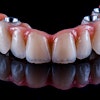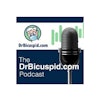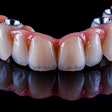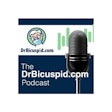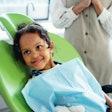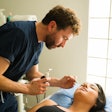
WASHINGTON (Reuters) Jan. 2 A simple mouth rinse may provide a new way to screen for head and neck cancers in people at high risk for these diseases, researchers said on Tuesday.
Scientists at the Johns Hopkins Kimmel Cancer Center in Baltimore are developing a saliva test -- inexpensive, easy to perform and painless -- that could spot diseases like mouth and throat cancer in heavy smokers, heavy drinkers and others at high risk.
The screening test focuses on finding cells with genetic markers that suggest the presence of these cancers.
In this "swish-and-spit" test, patients were asked to brush the inside of their mouths, then rinse and gargle with a salt solution. The scientists filtered out cells in the rinsed saliva that might contain one or more of 21 bits of chemically altered genes associated with head and neck cancers.
Experts say the vast majority of head and neck cancers are linked to tobacco use, including smoking tobacco and smokeless tobacco. Heavy drinking also increases one's risk.
If found early, these cancers are often curable - so early detection is sorely needed.
"We know who gets head and neck cancer -- people who smoke and drink a lot and tend to be at an older age. The problem is that it's sometimes difficult to diagnose until it's at its late stages and difficult to treat and cure," researcher Dr. Joseph Califano of the Johns Hopkins department of head and neck surgery said in a phone interview.
There is no screening test for head and neck cancers. So it would be nice to have a test to identify people at risk that can be performed by most medical personal -- nurses, doctors, or physician's assistant, he said.
The study appears in the journal Clinical Cancer Research.
The mouth rinse test was given to 211 people with head and neck cancers and another 527 people who did not have these diseases. It correctly identified more than half the people with cancer as having the disease, Dr. Califano said.
The researchers have since made changes to improve the test. "I think it's actually going to be really fairly impressive in terms of ability to detect stuff," said Dr. Califano, who expects it could be years before the test is widely used.
In the United States alone, about 13,000 people die of cancers of the head and neck and about 55,000 develop these cancers each year, according to the American Academy of Otolaryngology -- Head and Neck Surgery.
Copyright © 2008 Reuters Limited. All rights reserved. Republication or redistribution of Reuters content, including by framing or similar means, is expressly prohibited without the prior written consent of Reuters. Reuters shall not be liable for any errors or delays in the content, or for any actions taken in reliance thereon. Reuters and the Reuters sphere logo are registered trademarks and trademarks of the Reuters group of companies around the world.

